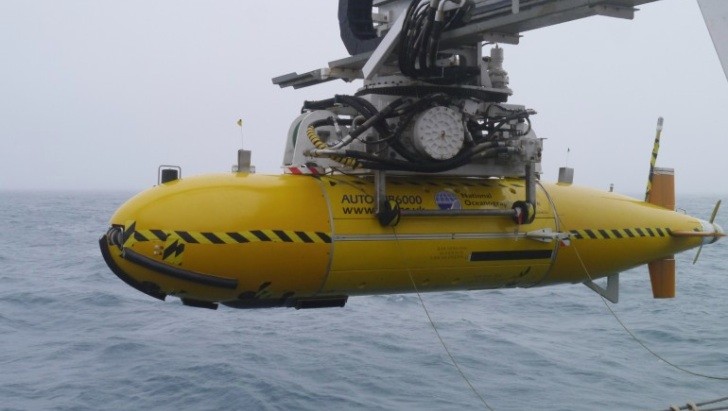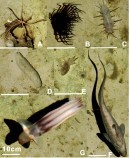It’s kinda funny to think about putting people to Mars when we haven’t even explored our oceans completely. It is only these times we have the technology to go deeper and see what kind of life forms lie on the seabed. The Autosub6000 is the newest autonomous submarine used for that and it already helped estimating deep ecosystem diversity at ‘landscape’ scales.
The Autosub6000 is a torpedo shaped autonomous sub, measuring 5.5 meters (18 ft) in length and 90 cm (2.9 ft) in diameter. The hull is made out of titanium and this enables it to go 6,000 meters (6 km/3.7 miles) below the surface, hence the 6000 in its name.
Using a powerful Lithium Polymer rechargeable battery system, the Autosub6000 can travel up to 1,000 km (621 miles), ultimately making it one of the world’s most capable deep diving science Autonomous Underwater Vehicle (AUV).
This is a new method of tracking down deep sea life and it revealed a tenfold increase in the precision of ecosystem diversity estimates. The last research showed that Anemones were the most abundant animal on the sea floor, info that has been previously missed using the trawling method using nets.
Finally, we can say progress is made when it comes to discovering what lies deep beneath the water surface of our planet. Still, the final frontier here is to completely study the lifeforms in the Mariana Trench. Up until now, scientists managed to discover a new fish species there, some gigantic single-celled amoebas a very tough shrimp species.
Using a powerful Lithium Polymer rechargeable battery system, the Autosub6000 can travel up to 1,000 km (621 miles), ultimately making it one of the world’s most capable deep diving science Autonomous Underwater Vehicle (AUV).
Deep sea life
The sub uses a belly-mounted high resolution camera to take a continuous stream of photos from the bottom of the sea, reporting in to the surface with what kind of animals are living there. Scientists then analyze the photos and calculate the species' relative abundance as well as estimate their size relative to the image pixels.This is a new method of tracking down deep sea life and it revealed a tenfold increase in the precision of ecosystem diversity estimates. The last research showed that Anemones were the most abundant animal on the sea floor, info that has been previously missed using the trawling method using nets.
Finally, we can say progress is made when it comes to discovering what lies deep beneath the water surface of our planet. Still, the final frontier here is to completely study the lifeforms in the Mariana Trench. Up until now, scientists managed to discover a new fish species there, some gigantic single-celled amoebas a very tough shrimp species.


